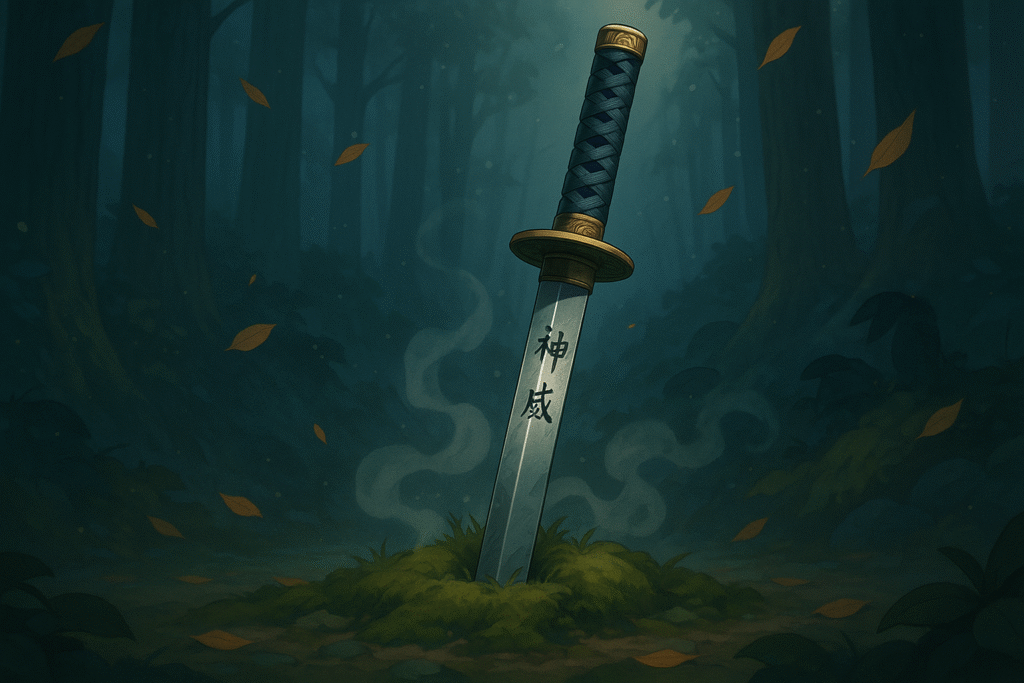Stretching from the southern tip of Kyūshū to the northern coast of Taiwan, the Japanese Nansei Islands form an archipelago of breathtaking beauty, rich biodiversity, and unique cultural heritage. This island chain, often referred to as the Ryūkyū Islands, is divided into two administrative regions: the Satsunan Islands (part of Kagoshima Prefecture) and the Ryūkyū Islands (Okinawa Prefecture). Known for their crystal-clear waters, coral reefs, and vibrant marine life, the Nansei Islands attract nature lovers, divers, and adventure seekers from around the world.
In this guide, we’ll explore the geography, history, and marine wonders of the Japanese Nansei Islands, uncovering their hidden gems, endemic species, and cultural significance.
The Geography of the Nansei Archipelago
The Nansei Islands consist of more than 200 islands, categorized into three main groups:
1. Satsunan Islands (Kagoshima Prefecture)
- Ōsumi Islands – Yakushima, Tanegashima, and Iōjima
- Tokara Islands – Kuchinoshima and other volcanic islands
- Amami Islands – Amami Ōshima, Tokunoshima, Okinoerabujima, and Yoron Island
2. Okinawa Islands (Okinawa Prefecture)
- Okinawa Main Island – The largest and most populated island
- Kerama Islands – Zamami, Tokashiki, and Aka
- Kume Island – A scenic island famous for its blue waters
3. Sakishima Islands (Okinawa Prefecture)
- Miyako Islands – Miyakojima and Irabu
- Yaeyama Islands – Ishigaki, Iriomote, and Yonaguni
This subtropical island chain is influenced by the Kuroshio Current, a warm ocean current that supports diverse marine ecosystems and makes the region one of the most spectacular diving destinations in Japan.
Diving and Marine Life in the Nansei Islands
The Japanese Nansei Islands are a haven for marine enthusiasts, offering world-class diving sites and encounters with majestic sea creatures.
1. Manta Rays and Pelagic Giants
- Ishigaki Island is Japan’s top destination for manta rays, with cleaning stations where these gentle giants gather.
- Yonaguni Island is known for its hammerhead shark migrations, particularly from November to June.
- Aguni Island boasts massive schools of bigeye trevally, creating a breathtaking underwater spectacle.
2. Coral Reefs and Macro Marine Life
The Okinawa region is home to some of the northernmost coral reefs in the world, with sites like Miyakojima and Kerama Islands showcasing colorful reef systems. Macro photographers will love finding pygmy seahorses, nudibranchs, and ribbon eels in the coral gardens of Iriomote.
3. Wreck Diving and Underwater Mysteries
- The Yonaguni Monument, an enigmatic underwater rock formation, remains a mystery—some believe it to be the remnants of an ancient civilization.
- USS Emmons, a World War II shipwreck, lies off the coast of Okinawa’s Kouri Island, attracting advanced divers interested in history.
4. Unique Marine Encounters
- Whale sharks are occasionally spotted in Kume Island and Yonaguni waters.
- Humpback whales migrate through the Kerama Islands from December to April, making for incredible whale-watching experiences.
- Bioluminescent algae near Iōjima (Kagoshima Prefecture) create an “underwater aurora borealis” effect in autumn.
Cultural and Natural Wonders of the Nansei Islands
Beyond the ocean, the Japanese Nansei Islands are home to dense subtropical forests, rare wildlife, and rich cultural traditions.
1. Wildlife and Endemic Species
- Yakushima Island (Ōsumi Islands) is a UNESCO World Heritage Site, home to ancient cedar trees (yakusugi) and endemic Yakushima macaques and deer.
- Iriomote Island (Yaeyama Islands) is known for the elusive Iriomote wildcat (Prionailurus bengalensis iriomotensis), a critically endangered species found only here.
- Tokunoshima Island (Amami Islands) shelters the rare Amami rabbit (Pentalagus furnessi), one of the world’s oldest rabbit species.
2. Indigenous Ryūkyū Culture
The Ryūkyū Kingdom once ruled these islands, and its influence is still seen in:
- Shuri Castle in Okinawa, a former royal palace with distinct Ryūkyū architectural style.
- Traditional Okinawan music, featuring the sanshin (a three-stringed instrument).
- Local cuisine, such as goya champuru (bitter melon stir-fry) and rafute (slow-cooked pork belly).
Ecotourism and Conservation Efforts
The Nansei Islands are an ecological treasure trove, but climate change and human activities pose threats to their delicate ecosystems.
1. Coral Bleaching and Ocean Warming
- Rising sea temperatures have damaged coral reefs, particularly in Ishigaki and Okinawa Main Island.
- Conservation initiatives like reef restoration projects aim to protect and regenerate coral ecosystems.
2. Endangered Species Protection
- Conservation programs focus on protecting sea turtles, which nest on Yakushima, Amami, and Okinawa beaches.
- Efforts to preserve mangrove forests in Iriomote help sustain critical habitats for rare wildlife.
3. Sustainable Tourism Practices
- Eco-friendly diving operations in Okinawa and Amami promote reef-safe sunscreen and responsible marine interaction.
- Visitors are encouraged to support local communities by engaging in cultural tourism and eco-friendly lodging.
How to Visit the Nansei Islands
1. Best Time to Visit
- Diving and snorkeling: Year-round, but manta ray season peaks from June to November.
- Humpback whale watching: December to April in the Kerama Islands.
- Hiking and nature trips: Spring and autumn offer the most pleasant weather.
2. Getting There
- Flights:
- Naha Airport (Okinawa Main Island) is the gateway to the Nansei Islands, with domestic and international flights.
- Ishigaki and Miyako Airports serve the Sakishima Islands, with flights from Tokyo, Osaka, and other cities.
- Ferries:
- Ferries connect Okinawa Main Island with surrounding islands, but schedules vary by season.
3. Travel Tips
- Use public transport: Many islands have limited bus services, so renting a bicycle or scooter is ideal.
- Respect local customs: The Ryūkyū culture has unique traditions—learning a few Okinawan phrases can enhance your experience.
- Pack eco-friendly gear: Reef-safe sunscreen and reusable water bottles help preserve the delicate marine ecosystem.
Conclusion: The Nansei Islands Await!
The Japanese Nansei Islands offer an unparalleled mix of marine biodiversity, cultural heritage, and breathtaking landscapes. Whether you’re an avid diver, a wildlife enthusiast, or a history lover, this tropical paradise has something for everyone.
By exploring responsibly and supporting conservation efforts, we can ensure that the beauty of the Nansei Archipelago remains for generations to come. So, when planning your next adventure, consider the stunning islands of Nansei—and dive into a world like no other!
🌿🐠🏝 Which Nansei Island would you love to visit first? Let us know in the comments! 🚀
Discover More About Japan & Japanese Culture 🇯🇵✨
Looking for more insights into Japanese life, language, and travel? Check out these must-read articles from Wakoku:
📖 Japanese Language & Learning Resources
🔹 Mastering Japanese Alphabet Pronunciation – Learn how to pronounce Japanese characters correctly.
🔹 A Beginner’s Guide to Writing Hiragana Characters – Start writing hiragana with confidence.
🔹 Learn Japanese Kanji Basics: A Beginner’s Guide – Master the foundations of kanji efficiently.
🔹 How to Type Japanese Letters Easily – Learn to type Japanese on your keyboard like a pro.
🔹 How to Say “Hello” in Japanese: The Ultimate Guide to Japanese Greetings – Learn essential Japanese greetings and when to use them.
🏯 Japanese Culture & Traditions
🔹 Experiencing a Traditional Japanese Bathhouse – Discover the etiquette and relaxation of Japanese sento and onsen.
🔹 Essential Drinks Vocabulary in Japanese: Order Like a Pro – Learn how to order your favorite drinks in Japan.
🔹 Mastering Nature Vocabulary in Japanese: A Comprehensive Guide – Expand your Japanese vocabulary with nature-related words.
🚀 Travel & Living in Japan
🔹 The Pros and Cons of Living in Japan: What You Need to Know Before Moving – Understand the ups and downs of living in Japan.
🔹 Kyoto Illumination 2024-2025: A Magical Winter Light Experience – Explore Kyoto’s stunning winter light displays.
🔹 Spas to Visit in Osaka: A Guide to Relaxation in Osaka – Find the best spas for unwinding in Osaka.
🗻 Adventure & Exploration
🔹 Japanese Seafood Names: A Comprehensive Guide for Seafood Lovers – Learn the names of seafood in Japanese for dining and shopping.
🔹 Expand Your Japanese Fruits Vocabulary – Discover common and unique Japanese fruit names.




